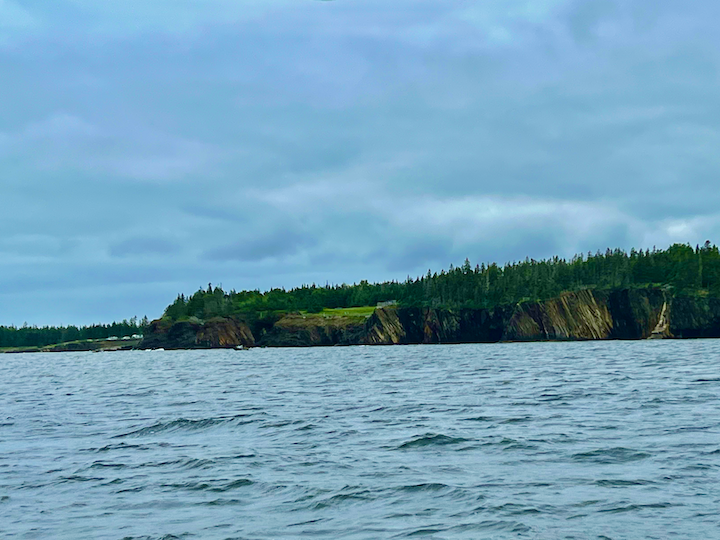
Today we left our friends who wanted to spend more time in Lunenburg, and headed further Southwest down the Nova Scotia coast to Carter’s Beach.
Nova Scotia has beautiful, rugged coast, with uncountable bays, islands, peninsulas and natural harbors. Because of its fine white sand, some say Carter’s Beach is like the Caribbean, if you imagine the spruces are palm trees, the temperature is 30º higher, and there is no fog or rain (both of which there is plenty of today!)
It’s good to be at anchor again after numerous days at docks. What are the differences? The advantages of docking include being able to walk from your boat to nearby attractions and amenities. Docks also have water, electricity and, depending on the marina, showers, laundry, supplies, etc. They provide a place to meet other boaters and locals. The disadvantages include needing to fuss with fenders and dock lines. And they can be expensive.
Anchoring, on the other hand, requires no fenders or dock lines. You just show up, drop your anchor, and you’re done… assuming your anchor holds, which isn’t always the case. If you’re over a rocky or weedy bottom, the anchor might drag. So there is some initial stress associated with anchoring. We typically mark the anchorage spot on the chart plotter, put the engine in reverse, and make sure we don’t move away from the marked spot. Once the anchor is set, the world is your oyster. You have the comforts of your boat while being out in the wild. It’s the best place from which to observe marine wildlife. And it’s free, whereas marinas usually charge anywhere from 1 to 3 Canadian Dollars per foot per night.
To non-boating readers, did you ever wonder how you cook on a sailboat that’s heeling or bouncing around in waves? The answer is the gimbaled stove, which swings in order to keep the surface flat regardless of boat movement.
You’ll also notice the there are raised edges on all the work surfaces (called “fiddles”). These give you something to hold onto, as well as keep things from sliding off.





